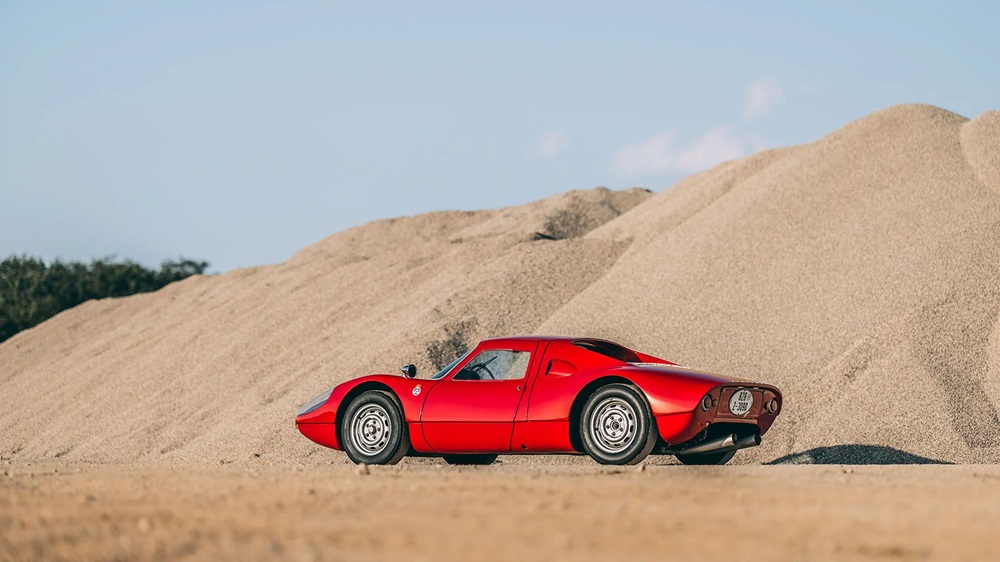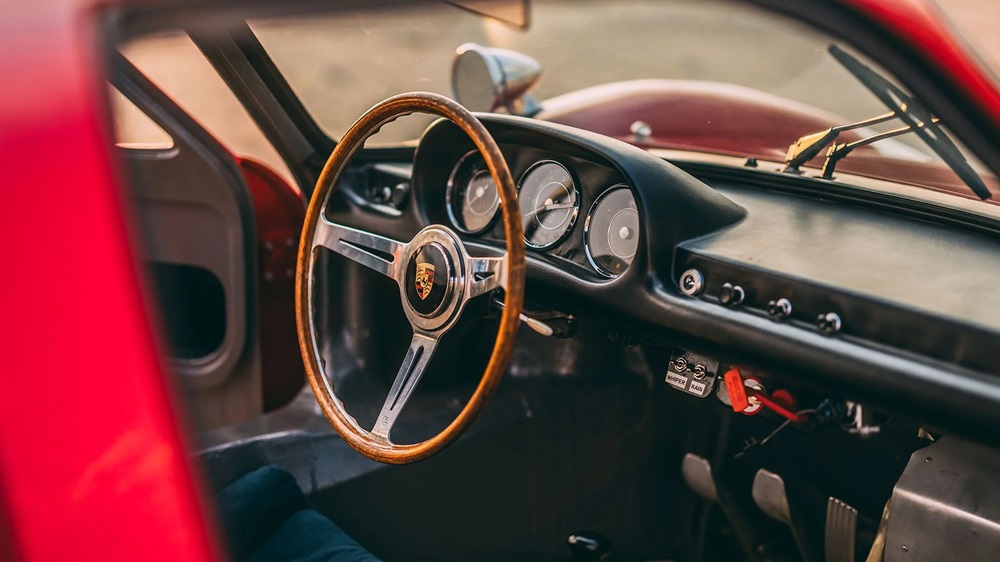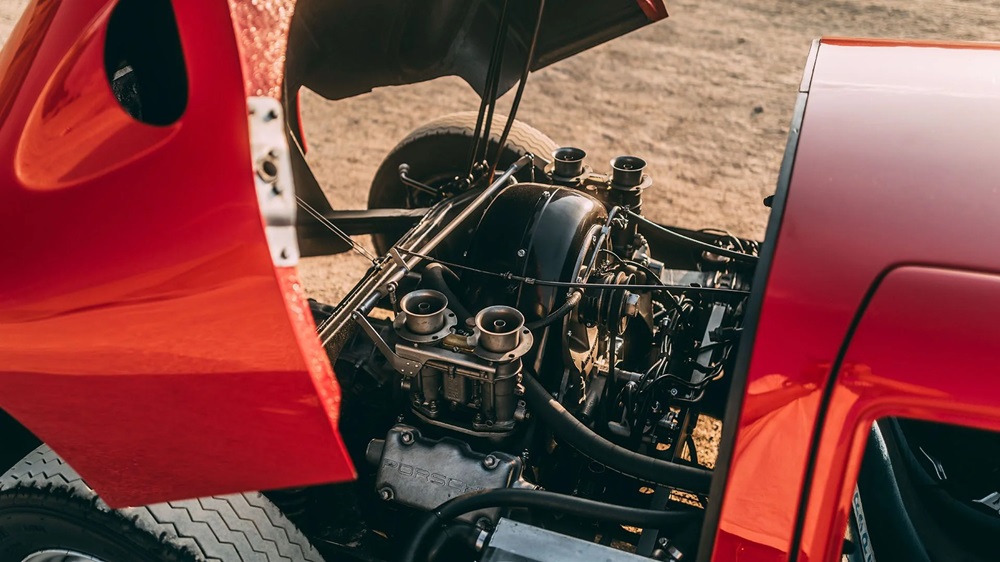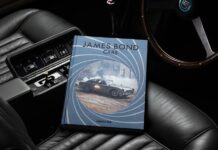The Porsche Carrera GTS (Type 904) was not only an incredibly fast and versatile race car, but it marked a pivotal inflection point for Porsche’s customer race department. Developed from the outset as a dual-use road/race car with FIA GT class homologation, the 904 featured a lightweight and innovative fiberglass body construction from Heinkel Flugzeugbau placed on top of, and bonded to, a steel box frame – the first of the so-called “plastic Porsches.”

Until this point Porsche utilized aluminum bodywork typically contracted from Karosserie Wendler with occasional assistance via Italian hands from Carlo Abarth. With the Carrera 6 (906) to follow two years later, the 904 marked the end of the classic road/race Porsche born in the 1950s – think 550 and RS Spyders, 356 Carrera GT, and 356 Abarth Carrera GTL. It marked the new six-cylinder, Type 901 engine’s introduction to racing and it featured the final series racing application of the legendary Fuhrmann Carrera four-cam engine that powered all manner of Porsche race and high-end road cars since 1953. While the 904 Carrera GTS may have marked a transitional period, it continued Porsche’s unblemished lineage of outstanding competition cars. The overall winner of the 1964 Targa Florio, the 904 was highly competitive over two racing seasons with additional class wins at the 12 Hours of Sebring, Nürburgring 1000 Kms, and 24 Hours of Le Mans.
In addition to the classic endurance races, the 904 was even more successful in regional circuit races and hillclimbs, proving especially popular throughout Europe. To those accustomed to racing a special 356, the 904 was the top rung to reach on the Porsche motorsport ladder. For those used to racing at the front in an RS Spyder at the start of the decade, it marked a welcome return to the sharp end of the field.
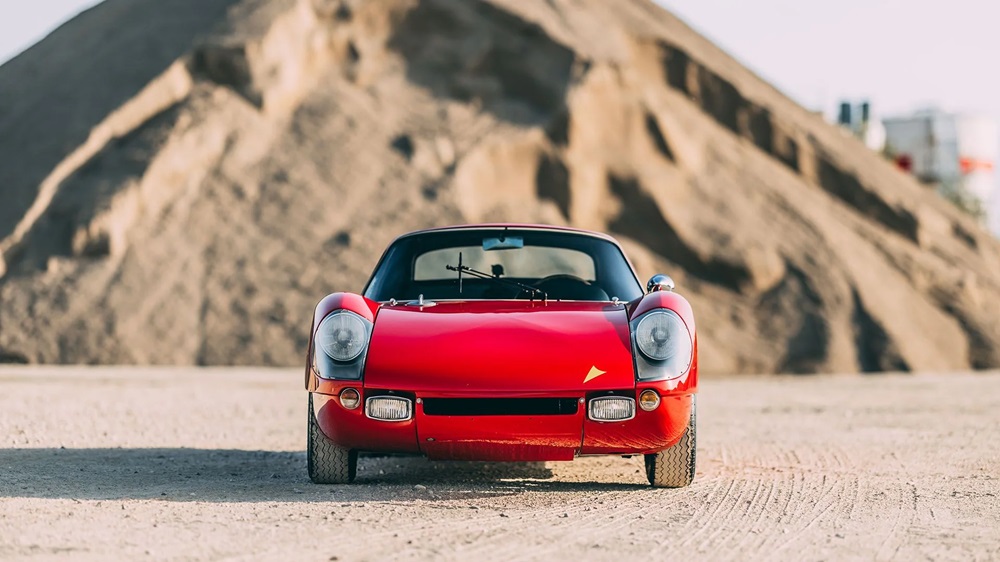
According to a copy of its Kardex, Porsche 904 057 was ordered by Spanish racer Juan Fernández. Throughout his 40-plus years in racing, Fernández was no stranger to sporting Porsches. Captivated by motorsport from a young age, Fernández’s family promoted his competitive interests first by attending races, then later with the purchase of a Spanish Montesa motorcycle. By the mid-1950s he began co-piloting a 356 Coupe with Antonio Farrás. After some time spent with both a Renault Dauphine and a BMW 700 Coupe, Fernández raised his game with the purchase of a 356 Carrera GT with a four-cam engine, disc-brakes, and aluminum alloy body panels.
His competition successes with the new Carrera GT reawakened his affinity for the Porsche marque, and with the new series of 100 904s homologated for FIA GT Group 3, he was now on the short list to receive a call from Zuffenhausen. When that call came, Fernández likely had his ideal racing specification in mind.
Sold by the factory “Verkauft von Werk” and finished in 6407 Signal Red (one of 14 so specified) over Blue seating material, Fernández’s Carrera GTS was notable for being ordered with a 180 PS Type 587/3 four-cam engine with a Sebring race exhaust system. Porsche produced two variants of the 587/3 engine for the 904, the 155 PS Strasse (street) engine and the 180 PS Sport engine. Furthermore, the Kardex reveals that it was ordered with a Type 904/0 transmission with Nürburgringübersetzung or Nürburgring gears, with Fernández possibly looking to stretch his new 904’s legs in circuit races. Licensed with oval German export plates “828 Z-3090,” Fernández quickly put his new sport-engined 904 to good use, building an enviable record in regional hillclimbs, rallies, and circuit races in 1964 and 1965. Twenty-one races in 1964 brought him nine overall hillclimb victories (seven record setting runs among them) and class wins on both rally stages and the track.
The year 1965 proved just as fruitful for Fernández and the 904, with a similarly hectic schedule comprised of 18 races, netting him 11 overall wins. It was no wonder that he was named Spanish Rallye and Spanish Hillclimb Champion with his exploits chronicled in a historical scrapbook accompanying the car. It must be said that this is no mere scrapbook. It is an exceptional period document that records nearly every event entered by Fernández and his 904 with Spanish newspaper clippings, exceptional race photography, hand-written notations, course maps, program covers, and even gear charts depending on the event! It is unlikely that Porsche’s own factory 904 Werks race entries are as well documented as Fernández’s 904 057. According to research, it is believed that Fernández never suffered any serious accident or major mechanical issues while piloting his 904. Fernández’s early and regular successes with chassis number 057 launched a formidable career in international motorsport rightfully earning him the nickname El Rey de Las Montañas, or the King of the Mountains.
For 1966, likely with little prodding, Fernández made the move to both a new Porsche 911 and Carrera 6 ending the high-level competition career of chassis number 904 057 without serious incident. It is said that 057 returned to the factory that year – possibly in trade for his new racer – likely landing with German industrialist Alfried Krupp for a short period. After Krupp’s passing in 1967, the car was sold and exported to the United States where it would remain until the early-1990s. While in the United States its excellent condition would endure, first with chemical engineer Dr. Daniel P. Boyd based in Virginia, who is noted to have painted 057 in Bahama Yellow and enjoyed it solely on the road; just the sort of dual-use Porsche intended from the start.
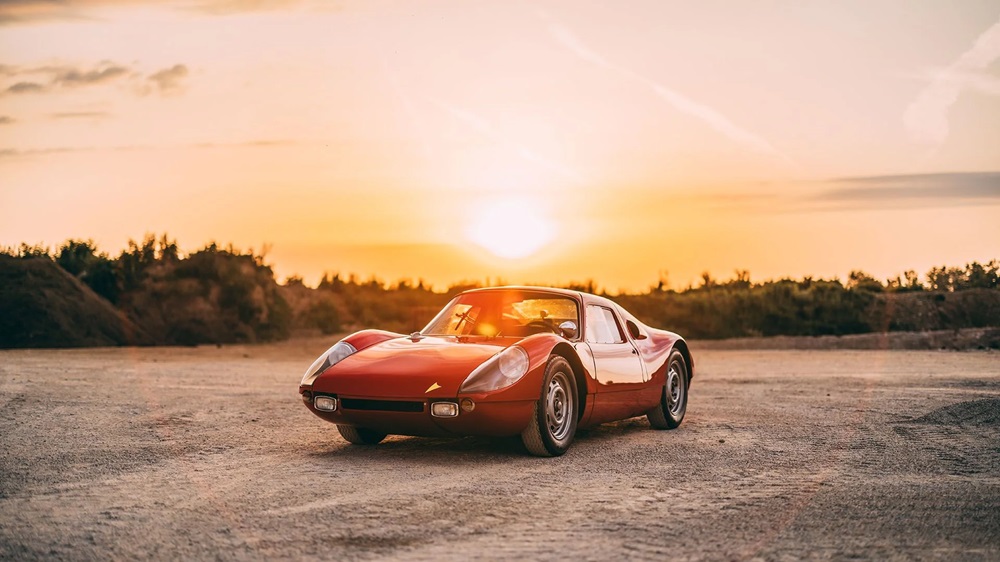
In 1971, the 904 again traded hands, this time to Student Naval Aviator Jonathan Wort, who would earn his Wings of Gold in the spring of 1972. While under his ownership, the car was repainted in metallic silver with a Navy-themed dark blue hood and yellow stripe with the new livery reminiscent of the A-4 Skyhawks and A-7 Corsair IIs he excelled at flying. In 1977, its four-cam engine was sent to four-cam guru Jim Wellington of Rennsport Werke for a rebuild. It must be said that Wort thoroughly enjoyed his post-rebuild 904 while shuttling between Naval Bases, crisscrossing the United States. During his time stationed in Kingsville, Texas, he participated in local autocross events with the 904 and dominated the competition, outperforming modified Austin-Healeys, Jaguars, 356 Speedsters, and 911s that were no match for his ten year old Carrera GTS.
Sadly, in 1983 after 11 years of ownership Wort sold his 904 to finance a home purchase, with the car trading to Robert Smith of St. Louis, Missouri. Smith was just the type of owner 904 057 deserved for sharing a home with not one, but two other special four-cams, the ex-Rodriguez brothers 550 Spyder, and an RS 60. While under his care, 057 was sympathetically restored with the consignor noting Mr. Smith’s recollections of 904 057 included that it was a very original, low-mileage example needing a light freshening. The engine was once again sent to Jim Wellington for tuning, with a Rennsport Werke service sticker dating from that service in 1988 remaining on the engine shroud today. The 904 remained within Smith’s stable of important four-cam sports racers until the turn of the decade, when it was sold through Daniel Schmitt & Co. to a Texas-based collector.
The history file notes that 904 057 returned to Germany circa 1993 for the first time since 1967, housed in a private collection near Wiesbaden. It was later acquired in 2001 by the highly regarded Blackhawk Collection and showcased at the Blackhawk exhibition during Pebble Beach car week. In 2013, the car once again found a new owner outside the United States, returning to its homeland of Spain where it was originally delivered and raced from new with enviable success. Between 2013 and 2021, its new caretaker enjoyed the car in historic events across Spain and Europe, including the renowned Le Mans Classic in 2014, Montjuïch Revival, Chronodriver Hillclimb Revivals, Espiritu del Jarama, and Rally Catalunya Històric. This regular but careful use ensured the car remained operational rather than idle in storage. At the time the previous owner smartly chose to employ a German-designed Capricorn engine in order to preserve its type 587/3 four-cam built from a blank case. After the transfer of ownership in 2021 the preserved four-cam, built to 587/3 specifications, was reunited with chassis 057.
More than 60 years since leaving Stuttgart–Zuffenhausen on 19 March 1964, chassis number 904 057 is rightly considered one of the more original 904s that features a rich, period racing pedigree. It boasts its original and unaltered frame welded chassis tag and riveted aluminum chassis plate, is offered with a four-cam engine built to 587/3 specifications from a blank case, its matching-numbers transmission, and perhaps most remarkably, its original bodywork—an exceedingly rare find for a Porsche 904, given the material’s nature and extensive use in racing. Inside, the seats in correct blue Dralon material are complemented by a period driver’s-side plastic floor covering and original date-coded VDO gauges among other coveted original pieces. In addition, this 904 is offered with a meticulously researched history file, assembled throughout the decades by previous owners that includes a veritable treasure trove of period racing photography and newspaper clippings contained within a scrapbook from its formative years in Spain, previous owner and restoration documentation from its time in the United States, and additional correspondence. Furthermore, it also features an extensive Jochen Bader report recently conducted in July 2022 confirming its current condition.
Chassis number 904 057 must surely be the finest example of Porsche’s dual-use race car on offer today. Those interested in acquiring number 057 may find themselves confronted by the very same question relevant to those with a deposit on a 904 in the winter of 1963. Road or Race? Today’s equivalent may be touring events or top-level historic competition, yet the fortunate owner of a 904 Carrera GTS need not make that difficult choice but dabble in both, properly enjoying Porsche’s final dual-use car just as the factory intended.
find more news here…





